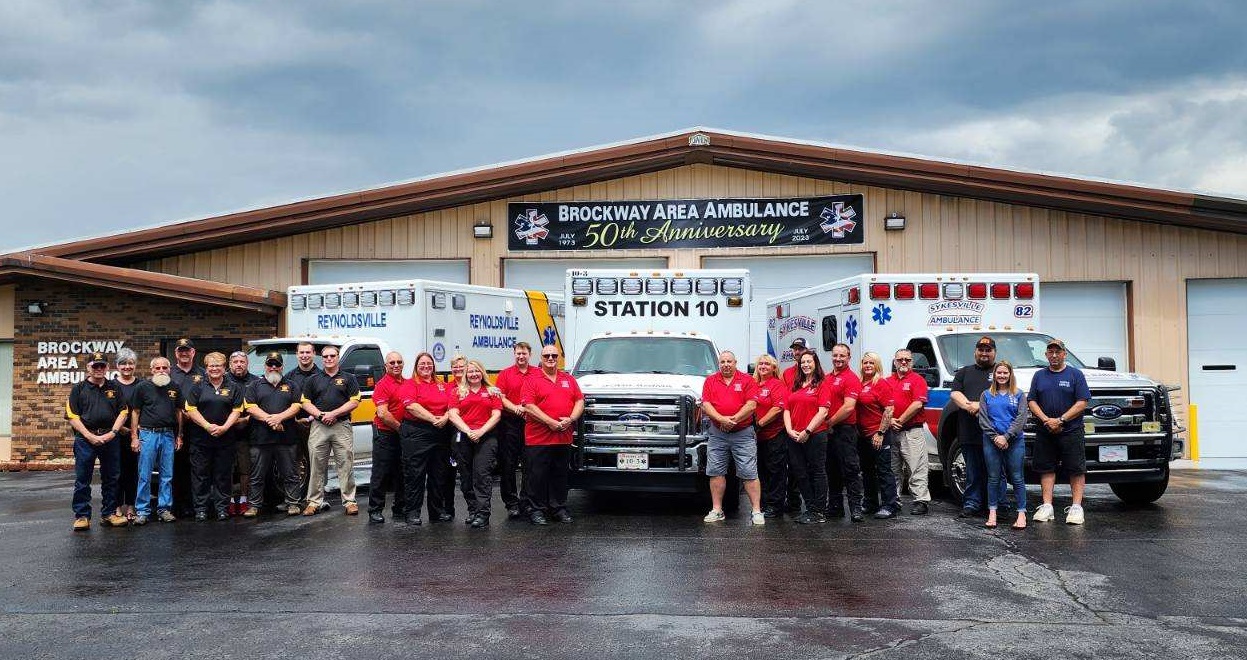DuBois Area School Board discusses building program
The DuBois Area School Board spent most of its March 21 work session discussing various options regarding the building needs in the district. Substitute superintendent Wendy Benton said the considerations about a building program had actually started more than two years ago and if the district is to get the benefits of state reimbursement there is a window of time to make some decisions.
Nine options plus two combinations of those options were presented to the Board during the meeting. Benton pointed out that although none of the plans were cheap, all but two include the state reimbursements which would lower the cost to the local district.
The two options which would not get state funding were the construction of new elementary schools, one that would house 625 students or the other that would accommodate 825 students. Currently the district includes children in grades kindergarten through four in its four elementary schools. The cost for the smaller building has been projected at over $31 million dollars, while the larger school would cost over $41 million.
Following the presentation of seven other options Benton said she would not recommend construction of new buildings since the district could not get any state money for them.
The other options which were outlined came from a building committee consisting of Sam Armagost, Dave Schwab, and board president Larry Salone working with Benton. Before presenting the options, Schwab said that both he and Armagost had been opposed to closing three elementary schools two years earlier, but that was “water under there bridge” and the board must now look to the future and do what is best for children and taxpayers. He added that the options which the board would see were the result of many months’ work and careful consideration.
The range of options centered on two buildings, Wasson and Oklahoma Elementary. They ranged from a basic renovation at Oklahoma to a renovation and expansion of the Wasson building that would add a new cafeteria and eight classrooms. The renovation at Oklahoma would cost around $4.5 million and the renovation and additions at Wasson would cost $12.7 million.
Some other options included an addition of a cafeteria and six classrooms at Oklahoma at a cost of $10.8 million, and a basic renovation and cafeteria addition at Wasson, which would cost $9.1 million.
Benton pointed out that the expansion project at the Penn Highlands Hospital is expected to bring some 400 new jobs to the area and could impact the student populations in elementary schools significantly. Although there has been no definite estimate as to whether the jobs will be permanent and long term, Benton said that it would be better to be prepared for student population increases than to have overcrowded schools.
With that in mind, the consensus of the board appeared to be that the renovation and expansion at Wasson should be at the top of the list. Armagost pointed out that if the Board would adopt the eight classroom addition at Wasson and if at a later date saw that all eight might not be needed, the plan could be reduced, but starting with a smaller number of classrooms and changing to a bigger number might not be feasible.
By the end of the meeting that consensus seemed to favor starting with the larger project at Wasson and then adding the Oklahoma project later. District Business Manager Jeanette Buriak said that with the current financial status the District enjoys, there would be no problem securing a bond to pay for the Wasson project and when the board decides to add the Oklahoma renovation it could be financed by another bond. In answer to a question raised by board member Lee Mitchell, she said that neither construction project would necessitate a tax increase, and the second loan would only extend the length of the repayment period.
BEST Robotics
Prior to the discussion of building options, the high school BEST Robotics team gave a demonstration of the robot they built and took through competitions. The competition this year centered on the problem of ocean pollution and how technology can be used to solve that issue. The team decided to work with the 4Oceans project and donated some of the money it raised to that project. The team placed first at the competition at Penn State and came in fourth overall at the regional competition at Grove City College, with a number of second place winners in various categories.
End of the school year to be announced next week
In her report at the end of the meeting, Benton said she has been working on various plans for the current school calendar. One of the plans includes using a waiver from the state for three of the days missed due to air quality issues. She gave the board a few alternatives and asked that it be ready to vote on a final plan at the regular meeting on March 28. At that time parents and students will learn what the last day of school and graduation date will be.
by Glenn Schuckers
